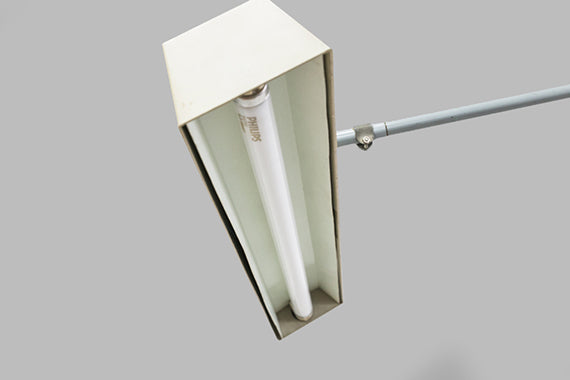







Dimmability
Non-dimmable
No possibility to dim the fixture.
Intern push button or turn switch
There will be a button of switch on the fixture itself to tune the right brightness of the light. With this option its only possible to have a on/off switch on the wall.
Example of our Copperhead with a internal push dim:
External 0/1-10
In lighting systems that use 0-10V dimming, five wires are commonly required to enable communication and control between the dimmer and the lighting fixture. Here's a breakdown of the function of each wire:
-
Line (Hot) Wire (L): This wire carries the incoming electrical power from the source to the dimmer switch. It is typically the "hot" wire that delivers the voltage needed to power the lighting system.
-
Neutral Wire (N): The neutral wire completes the electrical circuit and provides a return path for the current. It is necessary for the overall functioning of the electrical system and is often connected directly to the lighting fixture.
-
Ground Wire (G): The ground wire is a safety feature that provides a path for electrical current to safely dissipate in the event of a fault or short circuit. It is connected to the ground or earth to prevent electrical shocks.
-
Control Voltage (+): This wire carries the control signal that determines the desired light level. In a 0-10V dimming system, a voltage between 0 and 10 volts is used to control the intensity of the light. The higher the voltage, the brighter the light.
-
Control Voltage (-): This wire complements the control voltage wire and provides a reference point for the control signal. Together with the control voltage (+) wire, it enables the dimmer to send a variable voltage signal to the lighting fixture, adjusting its brightness accordingly.
In summary, the three power wires (Line, Neutral, and Ground) are responsible for supplying electrical power and ensuring safety, while the two control voltage wires (+ and -) are responsible for communicating the dimming level from the dimmer to the lighting fixture. This 5-wire configuration is commonly used in 0-10V dimming systems for greater control and flexibility in adjusting light levels.
With this option the fixture will be delivered with a 5 wired cable, Only suited if you have 5 wires installation.
External DALI
The DALI (Digital Addressable Lighting Interface) protocol is a digital lighting control system that allows for more advanced and flexible control of lighting fixtures compared to analog methods like 0-10V dimming. One notable characteristic of DALI is that it requires five wires for communication. Here's a breakdown of the reasons behind the need for five wires:
-
Power Supply (2 Wires):
- Two wires are dedicated to supplying power to the DALI network. This is often referred to as the power or voltage bus.
- One wire carries a positive voltage, while the other carries the corresponding negative or ground.
-
Data Lines (2 Wires):
- Two wires are used for bidirectional communication of digital signals between the DALI control devices and the lighting fixtures.
- These data lines enable devices like DALI dimmer switches, sensors, and controllers to communicate with individual or groups of DALI-compatible lighting fixtures.
-
Grounding Wire (1 Wire):
- The grounding wire is essential for safety and is connected to the ground for the entire DALI system. It helps to ensure proper functioning and safety by providing a path for electrical faults to dissipate safely.
Voltage
Worldwide there are different voltages per country. The most used are 120V and 220V. If you don't know the voltage in your country, please check this map.

120V
-United States
-Canada
-Mexico
220V
-Europa
-Australia
-Japan
-South Korea
If you have still doubts please get in contact with us.










